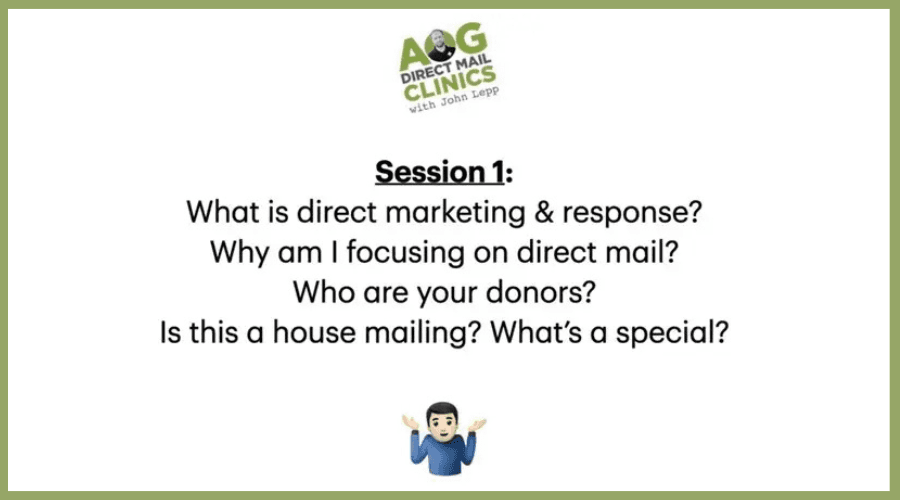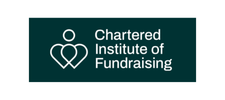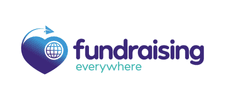Direct mail clinic #1 – All about marketing
John Lepp kicks off the Agents of Good (AOG) clinics by explaining why direct mail is a phenomenal tool for fundraisers. In fact, he thinks it is the perfect way to start a conversation with your donor and raise more for good causes around the world.
- Written by
- Carolina Herrera
- Added
- April 28, 2025

In the inaugural session of the AOG free direct mail clinics, John Lepp (joined by Rachel Zant) helps you understand the basics. Yes, these are the foundations and fundamentals that you need before you dive into a direct mail programme at your charity.
This clinic covers key questions, including:
- What is direct response?
- Why should fundraisers use direct mail?
- How often should you mail your donor?
- Should you check out the competition from other charity direct mail?
John reminds you that this is not mass marketing – direct marketing/direct response is a one on one conversation between you and your donor.
And in order to create these emotional, beautiful conversations, you have to think about what you said last time you wrote to your donor, consider what you asked for, and recall how you thanked them for the impact of their gift.
John also encourages you to take time before you start to:
- Understand your list – who are you talking to/mailing?
- Figure out your offer – what’s the ask?
- Consider timing – when will your donor get the mail piece in their hands?
Ultimately, this introductory session looks at why direct mail is a phenomenal tool for fundraising. There are many donors who love receiving appeals and giving. Direct mail is not dead. It’s just a misunderstood channel for fundraisers.
So, go on. Go forth, watch clinic #1 by clicking the image below, and get started on creating your next great direct mail fundraising appeal!
Watch AOG direct mail clinic #1 – All about marketing

John Lepp (he/him) is a fundraiser, designer and donor champion with more than 20 years of experience working with charities across Canada and around the world. As partner at Agents of Good, he helps charities tell stories that inspire donors to give, both online and offline. John is a respected and coveted international speaker who has travelled the world encouraging fundraisers be more human and vulnerable with those other amazing humans we call donors.
His latest book, Creative Deviations offers plenty of tips for how fundraisers can infuse their storytelling, fundraising and direct response with more creativity.
















